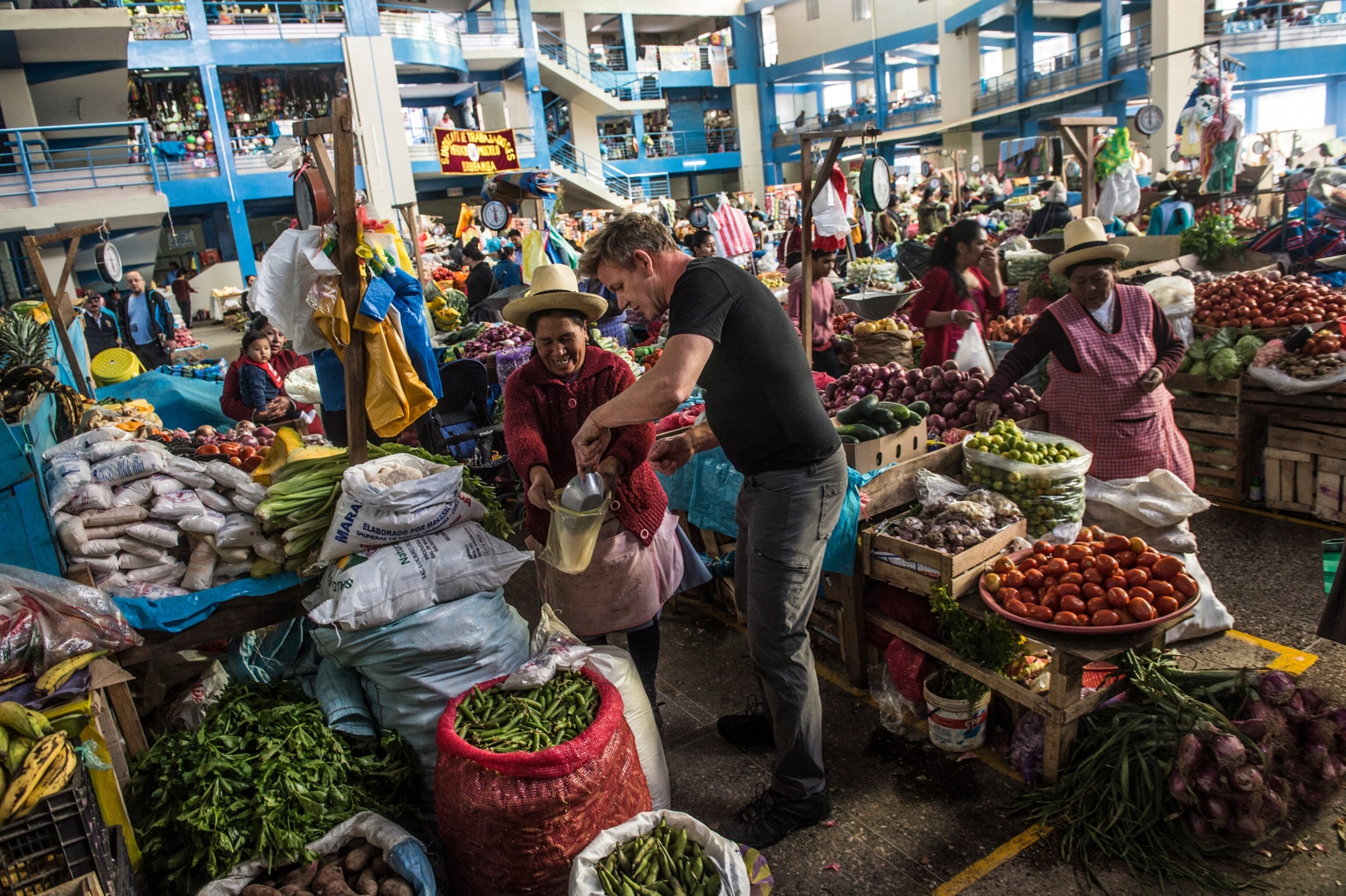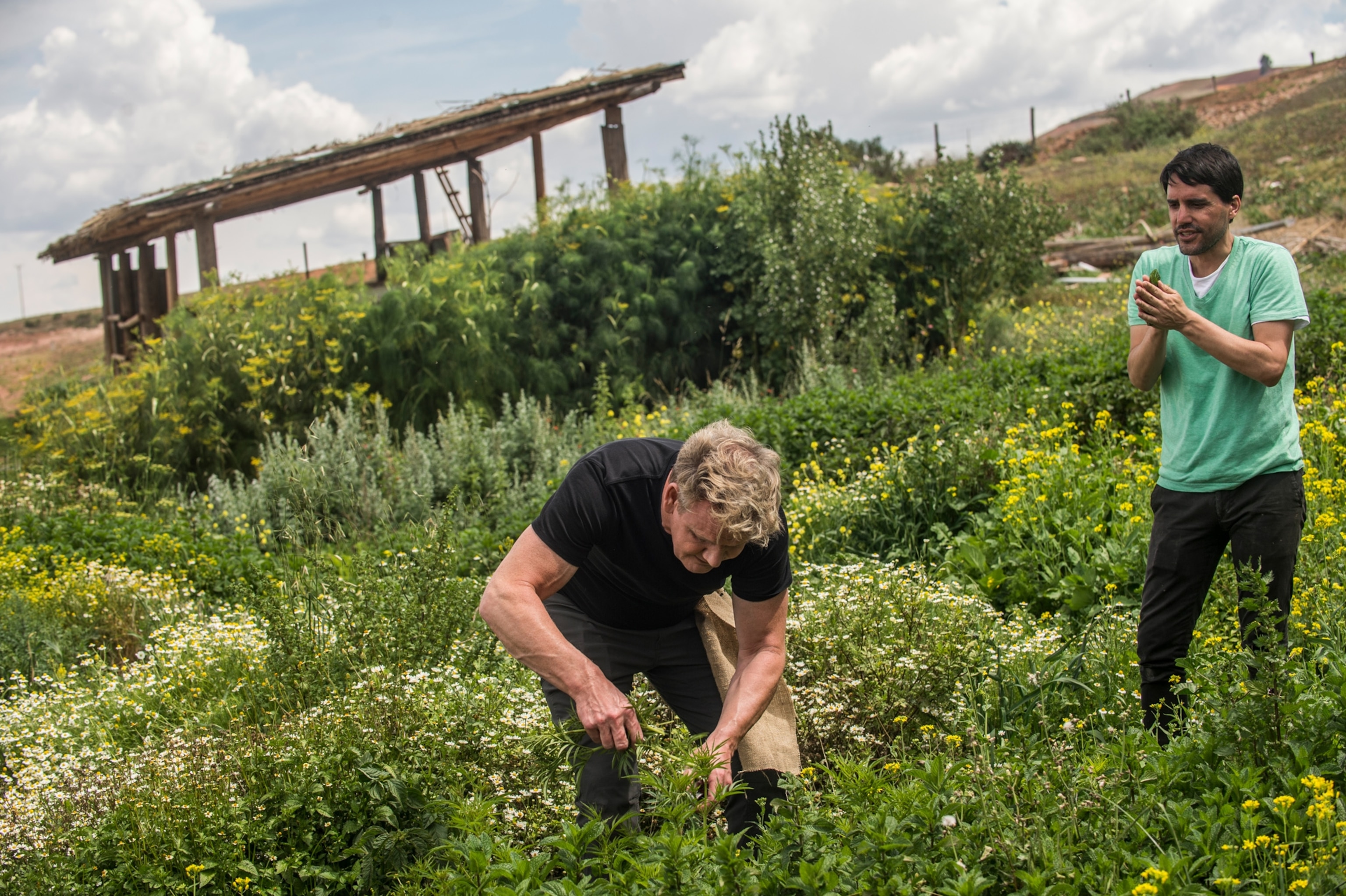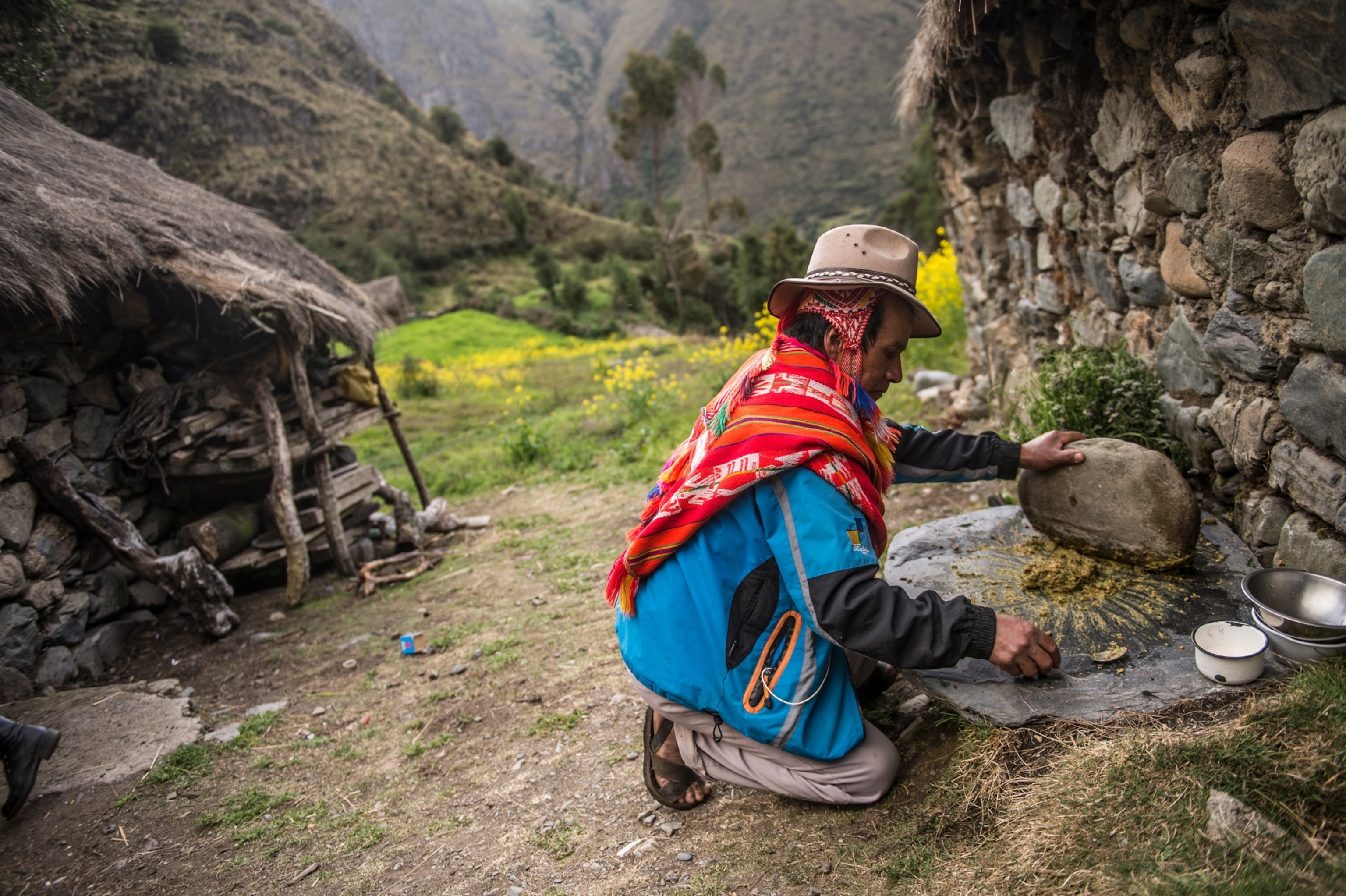Gordon Ramsay Adventures in Peru’s Sacred Valley
11,000-feet above sea level in Peru, Gordon meets a “mad potato scientist,” cooks in a mud oven, and scales a towering cliff face in search of a rare herb.

Scaling a towering cliff face in the Peruvian Andes via a route with fixed iron rungs, Gordon Ramsay pauses for a moment to catch his breath in the diminishing oxygen that exists at 11,000 feet above sea level. “Normally, chefs bond over dinner,” he gasps. “I can’t believe we’re bonding on a cliff edge on a mountain.” Michelin-starred chef Virgilio Martinez merely laughs. Before long, they’re relaxing on a rock shelf, enjoying the spectacular view of the Sacred Valley and a traditional Andean snack—dried alpaca meat.
More than 500 years ago, this region was the heart of the Inca Empire. While many things have changed, the altitude of this region and the biodiversity of its ecosystem have remained the same, allowing farmers today to follow in the ways of the Incas. Elevation changes everything from the taste of the produce to the temperature at which water boils. Martinez is known for his use of indigenous ingredients, putting a modern twist on high-altitude Andean cuisine. His restaurant in the Sacred Valley, Mil, operates as both a restaurant focused on ancestral cuisines and a culinary research laboratory.
The long-practiced traditions of Andean cuisine are anything but secret here, established over centuries in a specific environment. While society moves forward in some ways, these trusted practices—and ingredients—are still an integral part of life at altitude.
“Here, food is very pure,” Martinez says. “We don’t have to say organic, because it all is.” The indigenous communities of the Andes understand well how altitude and respect for the soil affect food and farming methods and connect them to the natural environment. These communities are experts in ancient local ingredients and food practices that might be otherwise lost to time. The opportunity to use these age-old traditions and foods in modern ways helps introduce them to new generations and keeps them alive.
- National Geographic Expeditions
More than 4,000 varieties of native potatoes grow in these highlands, and Andeans were the first people to cultivate them. “Mad potato scientist” Manuel Choqque works on cross-pollinating high-altitude potato strains once used by the Incas. The most spectacular versions are deep purple and red on the inside, and their hue deepens with altitude, to protect them from the intense ultraviolet light at high elevations. Even Choqque’s beer pursuits—fermented corn chicha de jora—come from the natural landscape. The first known usage of this drink was long ago during the government of Inca Tupac Yupanqui.


“I’ve never cooked on a stove like that. Cooking in a mud oven is not what I had planned,” says Ramsay, when Martinez shows him the outdoor kitchen for the Big Cook, which includes a huatia, an earthen oven dating to the Inca empire, as well as a large mortar and pestle. And since it’s the goal of Uncharted to highlight Andean ingredients and cooking techniques, Ramsay embraces the challenge. “The Sacred Valley is like an oasis at high altitude, and now it’s time to put it on the plate.”



